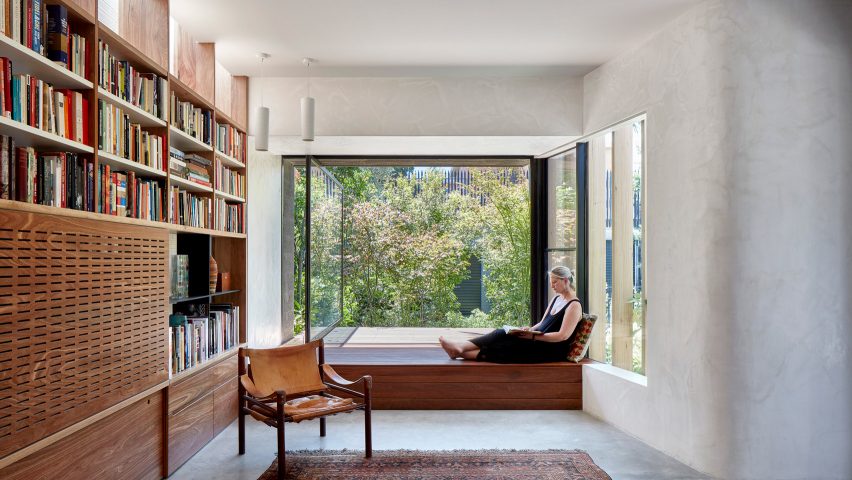
Splinter Society transforms Melbourne bungalow into Japanese-inspired home
Australian studio Splinter Society has redesigned a Californian-style bungalow in Melbourne, as a Japanese influenced house with strong connections to its garden.
Located in Elwood, a suburb of Melbourne, the building was constructed in 1920s as a typical Californian-style bungalow. Splinter Society combined its history with a Japanese aesthetic to create the home.
"We borrowed specific qualities and influences from the Californian bungalow style, such as an aesthetic that draws from an earthy, unpretentious and distinctively rustic Japanese influence, a focus on crafted natural finishes, a sense of cottage, and a strong connection to garden," said Chris Stanley, partner at Splinter Society.
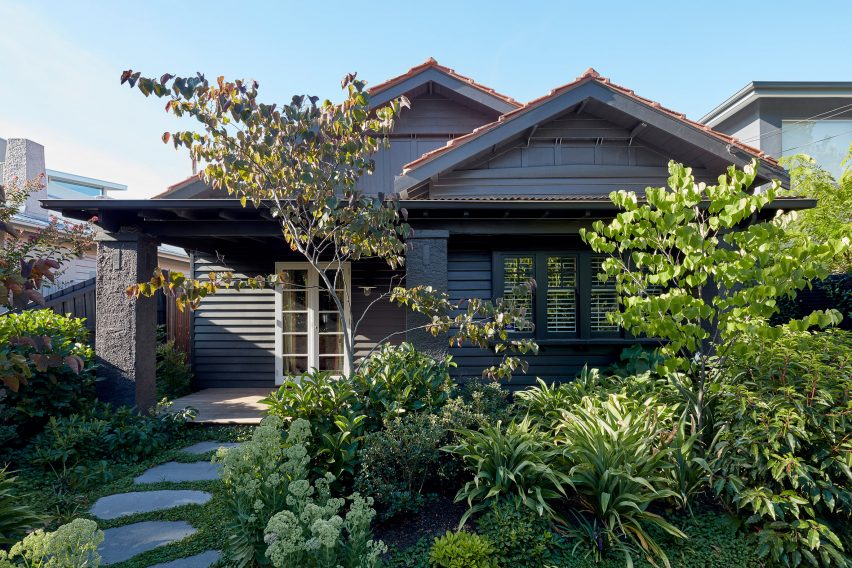
Situated on a regular, narrow 450-square-metre plot, the house has been designed to provide a sense of escape for the client, who is a writer and an actor.
"She requested an intimate place to retreat from public life, that respected but modernised the existing home," explained Stanley. "This was to be a place for reading, writing, relaxing with friends, and to create the feeling of being on holiday without leaving home."
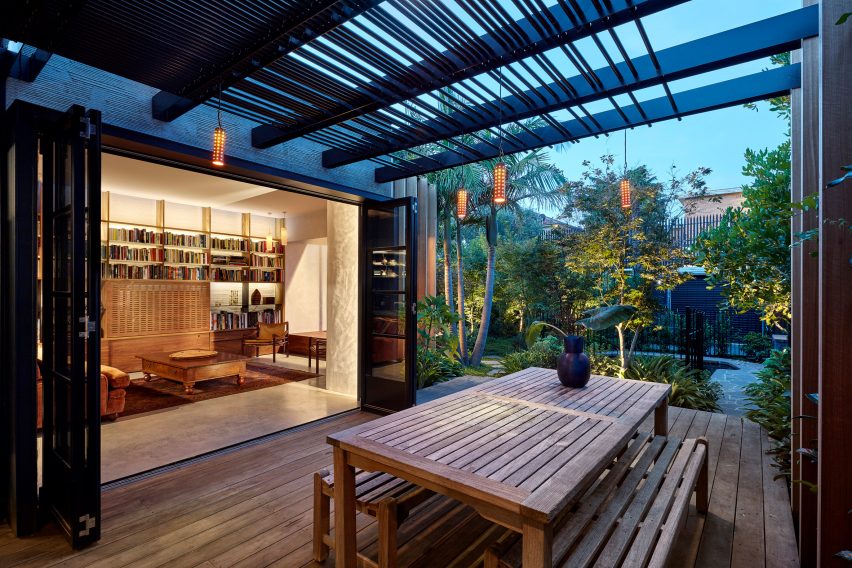
The external finish of the extension is a hand raked cement and natural fibre render, which is designed to create an interesting texture and play of light on the surface of walls.
"It is similar to a traditional techique used in parts of Japan. Given the clients love of the idea of a Japanese retreat and the historical references of Californian bungalows, it seemed like the only choice we had," said Stanley.
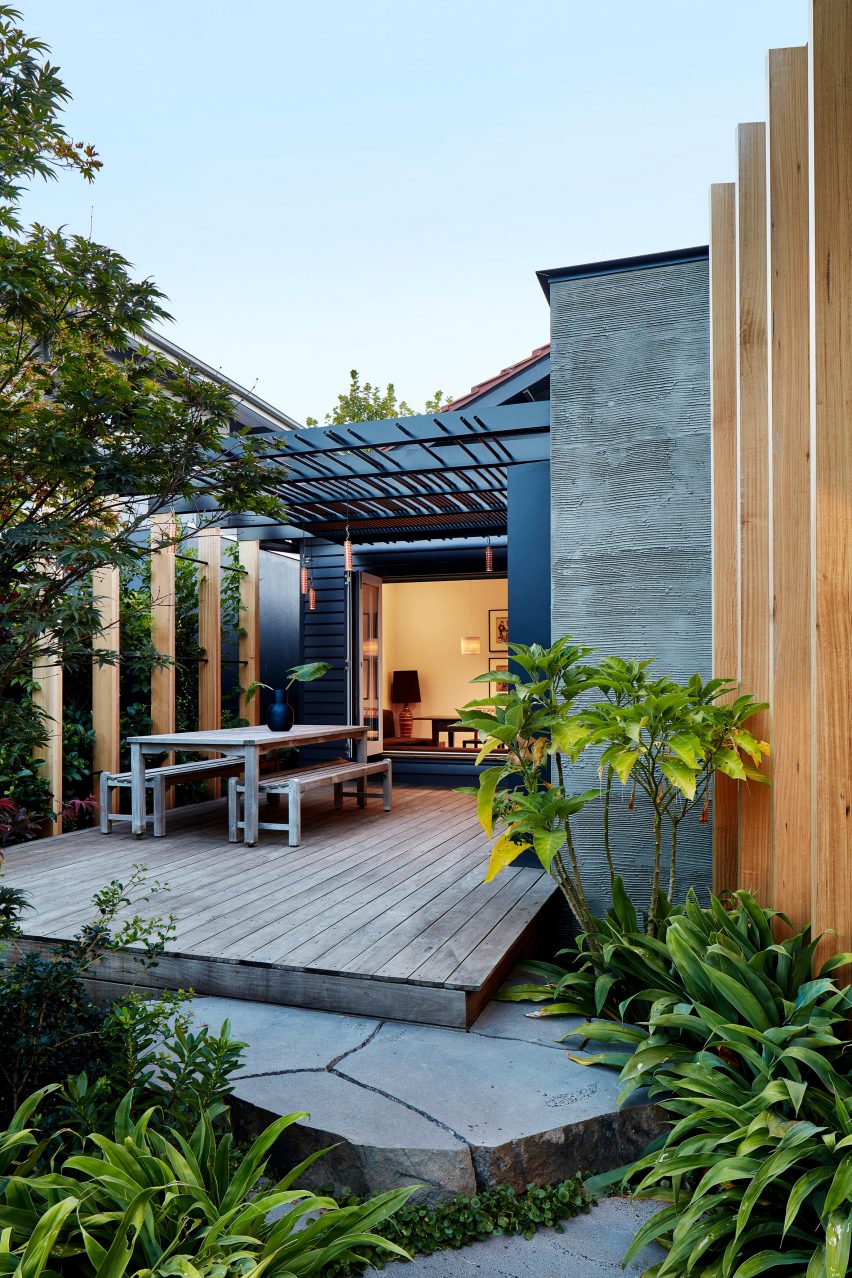
The architecture studio has retained the house's characteristic side entry, central hallway and adjoining small rooms, with the only addition a lounge and outdoor decks added to the rear.
"It serves to connect kitchen and dining, and open them to the garden. Each space is small and intimate, but capable of expanding for gatherings," said Stanley told Dezeen.
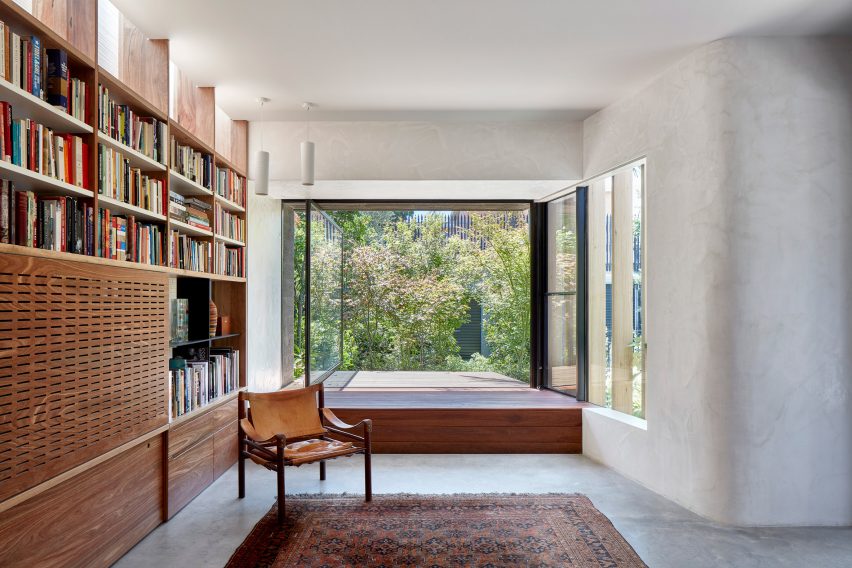
The front gate connects the street to a winding path and leads to house. New trees and bushes curtain views of the neighboring buildings.
"From the entry, the garden provides a desirable sense of privacy and helps refresh the traditional architecture. New openings and glazing carefully frame views of the naturalistic landscape beyond," he added
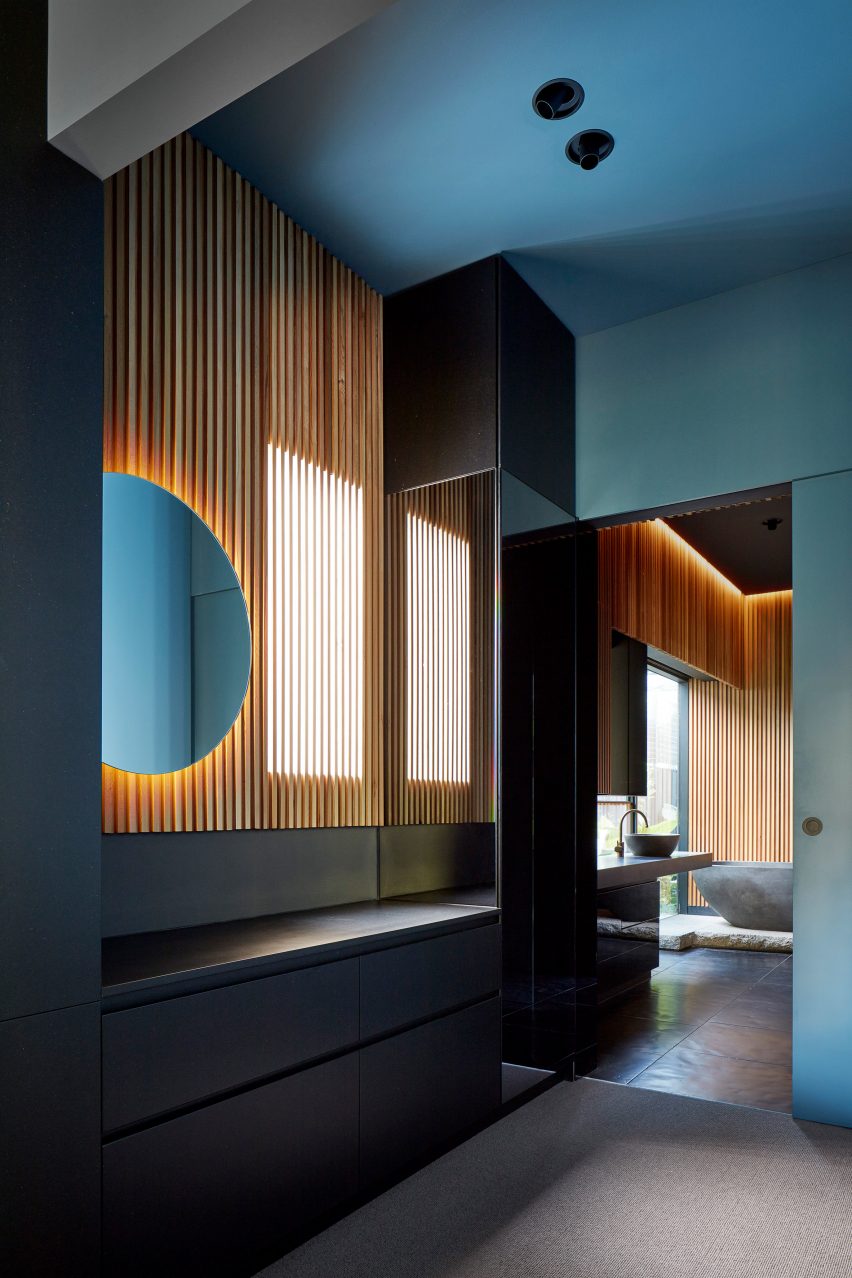
Dark local timbers, including a mix of Australian blackbutt and spotted gum from hardwood plantations on the coast of New South Wales, are used throughout the interior.
To highlight the clients eclectic collection of items she had collected the architecture studio created a custom designed set of wall shelves.
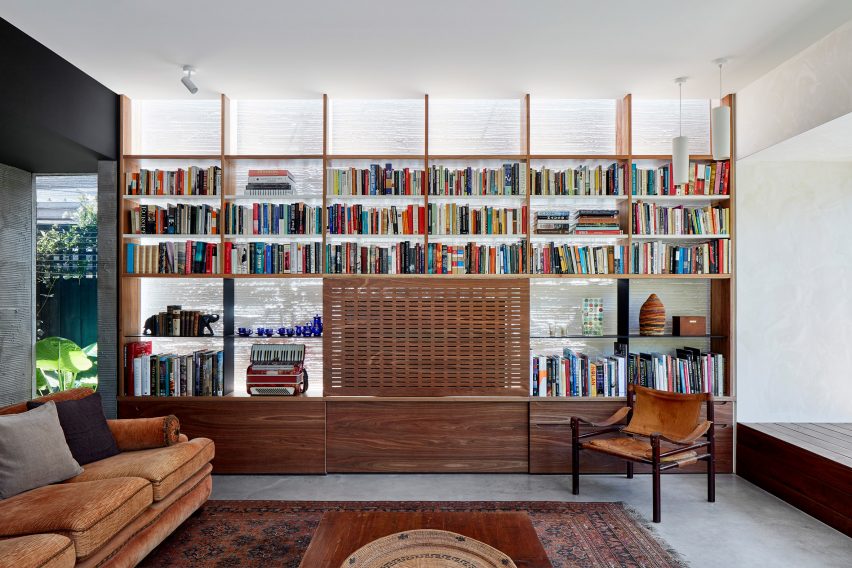
Other remodelled Californian bungalows on Dezeen include a 1940s house in Culver City, United States, renovated by Edward Ogosta Architecture, and the Profile House in Melbourne, Australia, extended by BLOXAS studio.
Photography is by Jack Lovel.